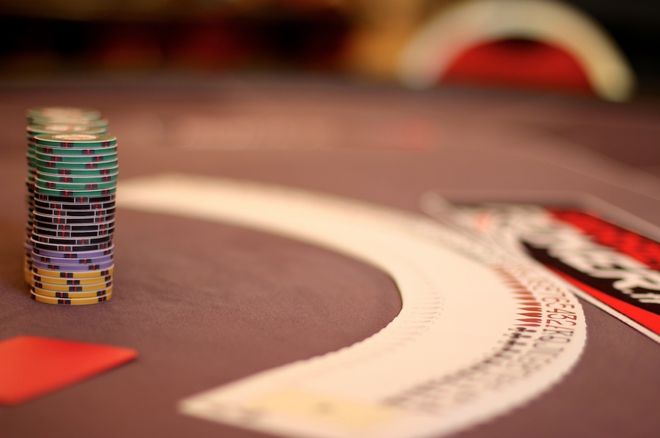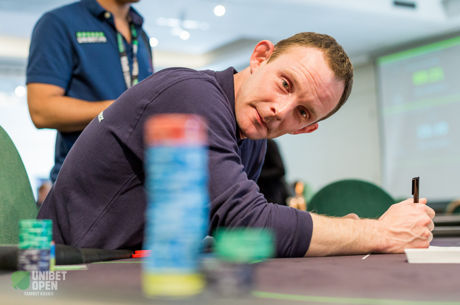How to Beat Tough Low Stakes Cash Games

Low stakes cash games almost by definition are supposed to be easy. After all, these games are often populated by some of the least skilled players that exist. Then as you play higher and higher limits, the competition becomes increasingly more competent and even world class at the highest stakes.
However, not all small stakes cash games are created equal. This is often the case right now for online poker players, especially those playing from places where the options are limited. Players are sometimes forced to play in relatively tough lineups online, even for very small amounts of money.
In this article I am going to discuss some of the best ways to beat tough low stakes cash games.
Succeeding Against Competent Low Stakes Poker Players
If there is one weakness that most competent players at the lower stakes have in common, it is an unwillingness to put big money in the middle without the nuts.
They will often pretend to be strong by making aggressive plays early on while the pot is relatively small, but once big portions of their stack are at risk, they will back down unless they have a really strong hand. And, of course, the great thing about poker is that it is really hard to make a strong hand.
Understanding this can lead to many profitable situations at the lower stakes where if you just have a little bit more heart than your opponent, you can take away many pots with little or nothing.
Now this doesn’t mean that you should turn into a maniac and start double-floating or raising the river every single hand. That’s a recipe for disaster. The key to taking away more pots versus competent poker players is all about knowing their tendencies.
More precisely, this means knowing who the weak players are.
Identifying the Weak Players at the Lower Stakes
One of the easiest ways to spot the weaker players is by looking at how often they go to showdown. If you are playing online and are using a HUD, then you can simply refer to their WTSD% (went to showdown %).
Players who are averse to playing bigger pots without a strong hand will often be on the low end here. Typically when I spot somebody whose WTSD% is in the low 20’s or below, I can almost be certain that this is the type of player who can be moved off of hands.
Now there is one important caveat to using this stat — you need to make sure that you have a decent sample size on the player. If a player has only gone to showdown five times, for instance, then this stat could be wildly off the mark. This is why I always like to have at least a couple hundred hands on my opponent before relying too heavily on this statistic.
If you are not using a HUD, another way to identify the weaker players at the lower limits is simply to pay attention to the frequency of pots they win and the types of hands they are showing down.
If they tend to play a “fit or fold” type of game — e.g., making just a single continuation bet and then giving up if they don’t get the fold — then this is the type of player who you want to float against a lot and take pots away from. Weaker players will also rarely show up with a bluff or call down with a weaker hand like middle or bottom pair.
Taking Pots Away From the Weaker Players
There are a few other important points to consider when you are looking to win more pots versus the weaker players in these games.
1. Frequency
First, you need to make sure you aren’t trying to bluff the same player every single time. You need to lay off and just let them have the pot from time to time.
Otherwise you run the risk of appearing like a maniac to a particular player and forcing that player to start fighting back. You want to make aggressive plays just often enough in order to make it believable.
2. Equity in the Pot
Secondly, you want to make sure that you have some equity in the pot when you are making an aggressive play. There is often no reason to run a bluff when you literally have nothing at all. Always try to have a least some sort of weak draw like a gutshot, or a semi-playable hand if making a move preflop.
On the river, of course, sometimes it will make sense to bet or raise with absolutely nothing because this is the only way to win the pot. However, on all previous streets always make sure that you have outs.
3. Board Texture and Situation
Lastly, it is very important that you make aggressive plays in the right spots and in the right situations. For instance, it is not a good idea to three-bet light preflop versus a tight player who opened under the gun. Most people will open with their tightest range from early position.
It would make much more sense to make this play versus someone opening from the button or the cutoff. The reason why is that most people will open with their widest range from late position because they are often just trying to steal the blinds.
Postflop, a similar logic applies. If you are the preflop caller it isn’t a good idea to make aggressive plays on Broadway heavy boards like A♥K♣10♠. Somebody who raises preflop is more likely to have some of these cards in their range.
It is a much better idea to semi-bluff on a board that is wet and has lower cards — e.g., like 6♥7♥9♠. As the preflop caller, you are more likely to have cards that connect with a board like this. And more importantly your opponent is less likely to have connected in any major way with these kinds of boards.
If you are the preflop raiser, the exact opposite applies. You should absolutely use scare cards such as an Ax or a Kx to your advantage. A weaker player will often let go of a middle pair-type hand because they are afraid that you hit the Broadway cards that you are representing.
Final Thoughts
You are never going to “crush” a tough lineup of decent players at the lower stakes. Your opponents simply do not make enough big fundamental mistakes in order for this to happen.
In fact, the best approach to these games is actually not to play in them at all. There should always be at least one really bad player at the table when you are playing at stakes this low. But for various reasons this is not always possible in today’s online poker environment.
Hopefully if you do find yourself at a tough low stakes table, some of the strategies outlined in this article will help you gain a bit of an edge versus the more competent players in these games.
Nathan “BlackRain79” Williams is the author of the popular micro stakes strategy books, Crushing the Microstakes and Modern Small Stakes. He also blogs regularly about all things related to the micros over at www.blackrain79.com.
Want to stay atop all the latest in the poker world? If so, make sure to get PokerNews updates on your social media outlets. Follow us on Twitter and find us on both Facebook and Google+!









